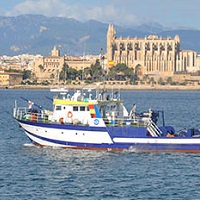Keyword
Portugal
19 record(s)
Type of resources
Categories
Available actions
Topics
INSPIRE themes
Keywords
Contact for the resource
Provided by
Years
Formats
Status
-
Overall objectives in the EU GO project are to assess the promising potential of seismic imaging for physical oceanography, in view of its combination of fine resolution and coverage unmatched by conventional oceanographic measurements. D318 was to provide the means of assessment by obtaining a unique, comprehensive, oceanographic and seismic dataset at the same time and place. Specific objectives for R.R.S. Discovery cruise 318a were to deploy four ADCP moorings, three adjacent temperature-logger moorings and STABLE, in an L-shape array in 750-1000m depth east of Portimao Canyon, carrying out adjacent CTD stations, deploy two OBH moorings, carry out seismic sections using the Ifremer high-frequency air-guns and streamer, accompanied by regular XBT and less frequent XCTD casts. In addition underway data was logged including ship-borne ADCP, surface temperature and salinity, meteorology, gravity and magnetics (to test new NERC magnetometers).
-
Overall objectives in the EU GO project are to assess the promising potential of seismic imaging for physical oceanography, in view of its combination of fine resolution and coverage unmatched by conventional oceanographic measurements. D318 was to provide the means of assessment by obtaining a unique comprehensive oceanographic and seismic dataset at the same time and place. Specific objectives for R.R.S. Discovery cruise 318b were to (i) recover four ADCP moorings, three adjacent temperature-logger moorings and STABLE, from 750-1000m depth east of Portimao Canyon (ii) perform deep water CTD casts (iii) carry out seismic sections using the NMF supplied Bolt airgun and streamer, accompanied by regular XBT and less frequent XCTD casts, iv) work with MV Poseidon to test novel seismic data acquistion strategies. In addition underway data was logged including ship-borne ADCP, surface temperature and salinity, meteorology, gravity and magnetics (to test new NERC magnetometers).
-
Transit.
-
Hydrography and physical oceanography cruise for the French Navy's hydrographic and oceanographic service (SHOM).
-
SHOM cruise
-
Transit.
-
Hydrography and physical oceanography cruise for the French Navy's hydrographic and oceanographic service (SHOM).
-
Beautemps-Beaupré cruise.
-
The objective of the cruise was to improve our understanding of biochemical processes in the near-surface and microlayer of the ocean. We examine gradients in major nutrient concentrations and cycling, production and consumption of key biogases and variability in biological communities between micro-layer, near -surface and deeper water, and between productive and oligotrophic waters along a transect from offshore oligotrophic to coastal upwelling waters off western Spain and Portugal. We also aimed to examine the influence of gradients in physical, biological and photochemical processes at or near the surface micro-layer on the transport of heat and bio-gases across the air-sea interface. Using near-real time satellite imagery of ocean colour in combination with continuous underway measurements of sea surface temperature and chlorophyll fluorescence we identified a suitable oligotrophic site ~25nm off the coast just north of the spain/Portugal border, and reached it on 21 st June and commenced scientific work. We then worked our way inshore via 4 more stations to an upwelling site where science work was concluded on 6th July. The vessel then returned to Falmouth, arriving on 9th July.
-

Recovered & deployed again 3 pairs of moorings with Aanderaa current meter on the slope along the main route of the Mediterraneam water.
 Catálogo de datos del IEO
Catálogo de datos del IEO